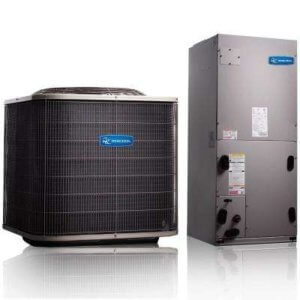A family friend reached out a few weeks back about the potential impact of a certain roofing system compared with another and how it might impact the value of their property down the line. It resonated with me as I am currently in the process of replacing the original roof on my 35-year-old home. My own experience has been somewhat tempestuous as we struggled with replacing an uncommon roof type and battling some significant damage we uncovered along the way. My home is an old family cabin that my wife and I have renovated over several years, and the old roof was an uncommon stone coated metal cold roof. We don’t have any plans to sell, so resale wasn’t on our minds. We wanted something that would blend in with the forest setting and perform well for a long period of time for the reasons mentioned above. Ultimately, we chose a very thick, shake-like asphalt shingle. We simplified the roof rakes and beefed up the Boston ridge to create a slightly more modern look, which we are happy with. In our case, we probably did increase the value of our home, and we are happy with the look of the new shingles even though we were concerned with it.
Anyway, when comparing the two roofing systems my friend was considering I didn’t feel one would significantly change the property’s value. In their case neither option would have been unusual for the home, but one was clearly more expensive. It was difficult for me to answer whether or not they would see a return on the investment for the more expensive roofing system. To answer the question, this is where I shifted focus to the overall picture. Sometimes certain home improvements, materials used or construction methods do not have a direct impact on a property’s value, but can when viewed in conjunction with the rest of the home and it’s finishes. I distinctly remember an incredible custom home of which the owner spared no change or effort throughout, but installed vinyl floors which was (honestly) just his preference. However, when helping him with the sale, it was a sticking point when comparing the finishes through the rest of the home on such a high dollar listing. Similarly, I remember walking through a property where the owner did some light renovations in anticipation of a sale. The fresh paint was great, but the Viking dishwasher felt odd to me. Yes, it was undoubtedly expensive and was certainly a talking point, but it didn’t fit well with the rest of the finishes and I don’t think that homeowner saw a return on that investment. The moral of the story, underdoing it and overdoing it are both bad, but in different ways.
Okay, if you’re still reading, on to the peace of mind part. I have probably written about this in other articles, but I wanted to touch on a few other considerations, particularly as we see new construction ticking up.
1) Snow slides. In my case, a metal roof was not an option. I have a wraparound deck that the snow would absolutely destroy in the event it were to slide off. My old roof never slid, and I hope my new roof never slides. In other cases, you want the snow to slide. Low roof pitches or shed roofs can be a good example.
2) Ventilate! I can’t think of very many circumstances where I would not recommend installing a ventilated or cold roof to help mitigate ice damming. This will usually include some form of screen or vent along the roof soffit and a vent in the gable ends or along the ridge of the home.
3) Ice Damming. Believe it or not, we get snow and ice up here. I believe code requires ice and water shield along the roof edges and valleys, but I usually suggest putting it everywhere, if you can. There are better ways to prevent ice damming as mentioned above in the ventilation section, but make sure you are protected in the areas mentioned and it never hurts to have the extra protection, particularly on roofs with a lower pitch.
4) Pitch. Speaking of pitch, be careful with this one. The modern, low sloping or flat roof systems are becoming more and more popular, but they can pose significant challenges when it comes to snow accumulation and ice damming. I’ll never forget all of the struggles I’ve had over the years with commercial building management where flat roofs with drain systems are common. The moral of that story, make sure you have heat tape in those drains, and monitor them closely. It doesn’t take long for these to plug up with ice creating a swimming pool on top of your roof.
As a final bit and disclosure, I’m a real estate agent, not a roofer. I have experience with some of these things, but am in no means an expert when it comes to the construction types and methods best for your situation. Always consult with your contractor and local roofer, and keep in mind our unique climate when it comes to architects. People tend to bring their local architect with them from dramatically different climates which can often lead to incompatibility with local contractors and issues with construction methods down the line.

 You’ll probably find a video in the coming weeks with respect to heat pumps in our climate, I’ve just installed one. One can assume that probably means that they do work in our climate, otherwise I wouldn’t have installed one. The real answer is, pretty much. With that said, read on for details.
You’ll probably find a video in the coming weeks with respect to heat pumps in our climate, I’ve just installed one. One can assume that probably means that they do work in our climate, otherwise I wouldn’t have installed one. The real answer is, pretty much. With that said, read on for details.